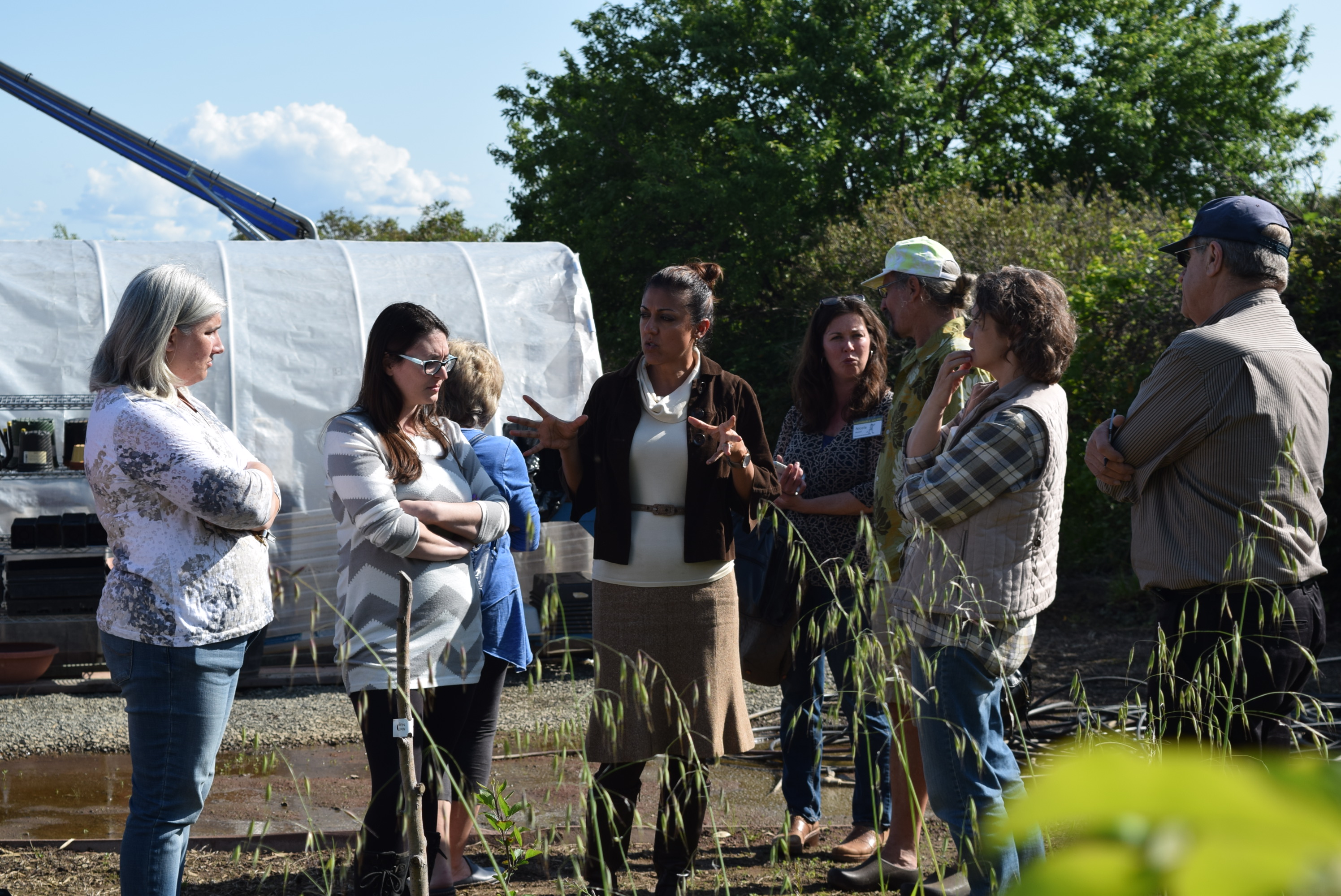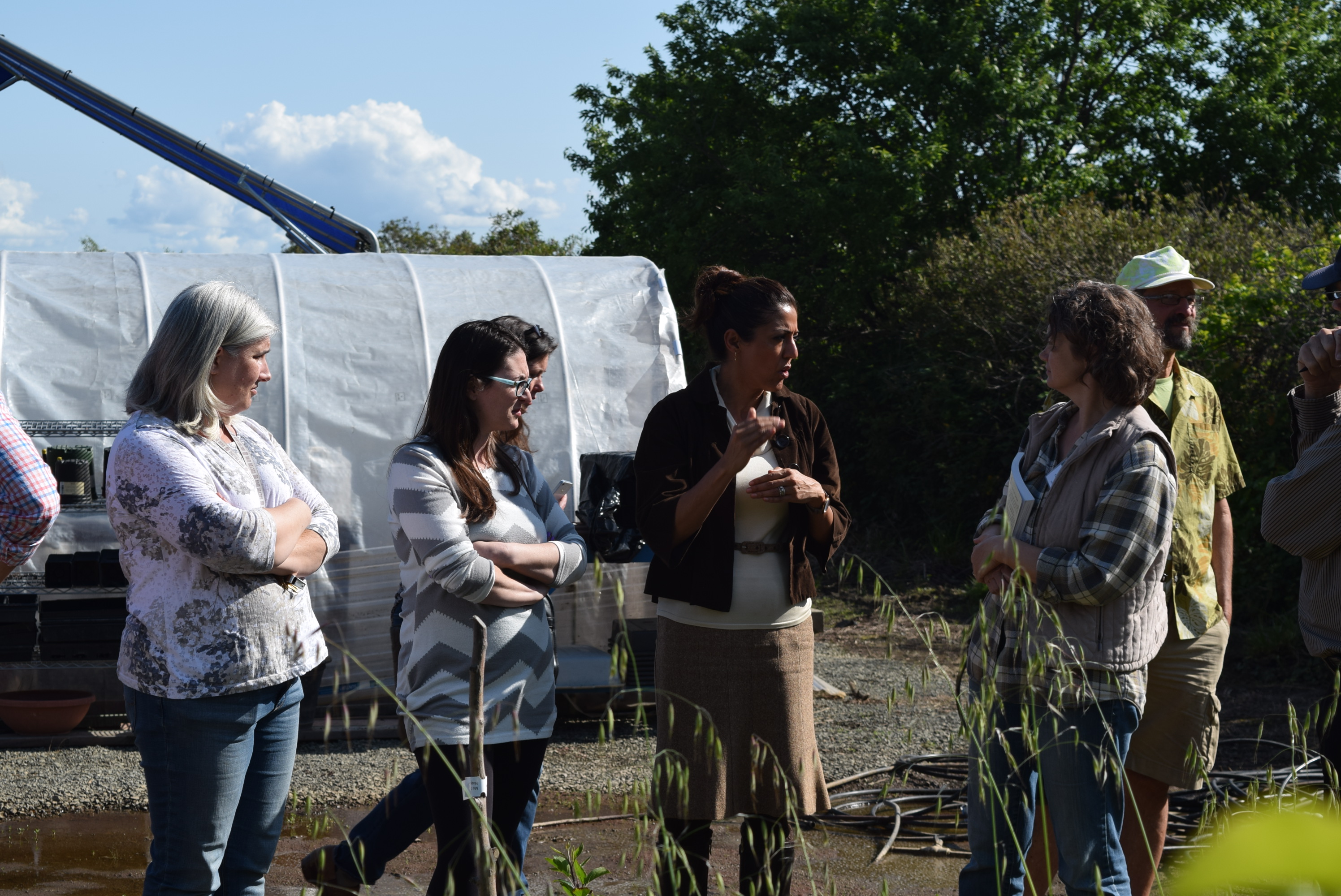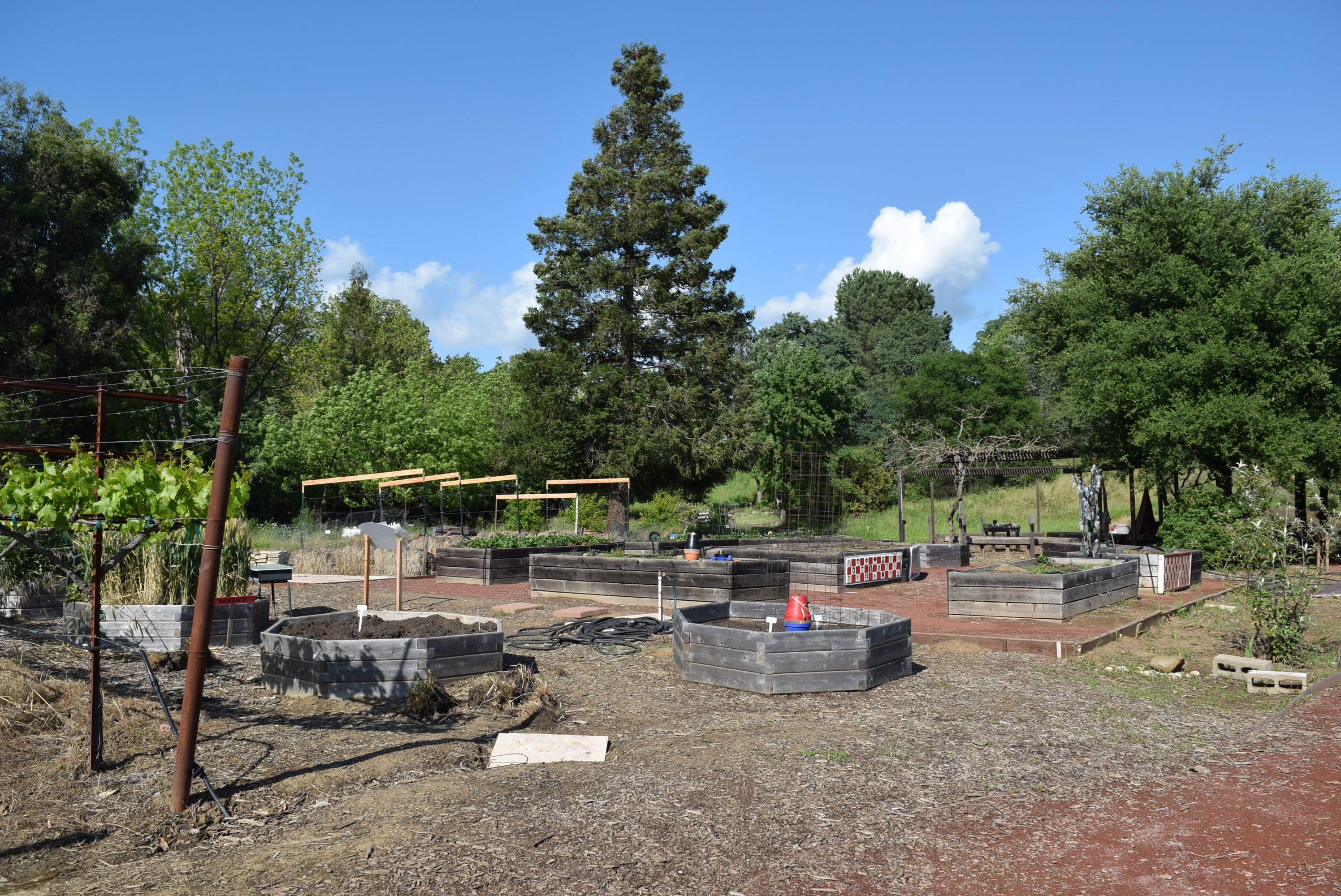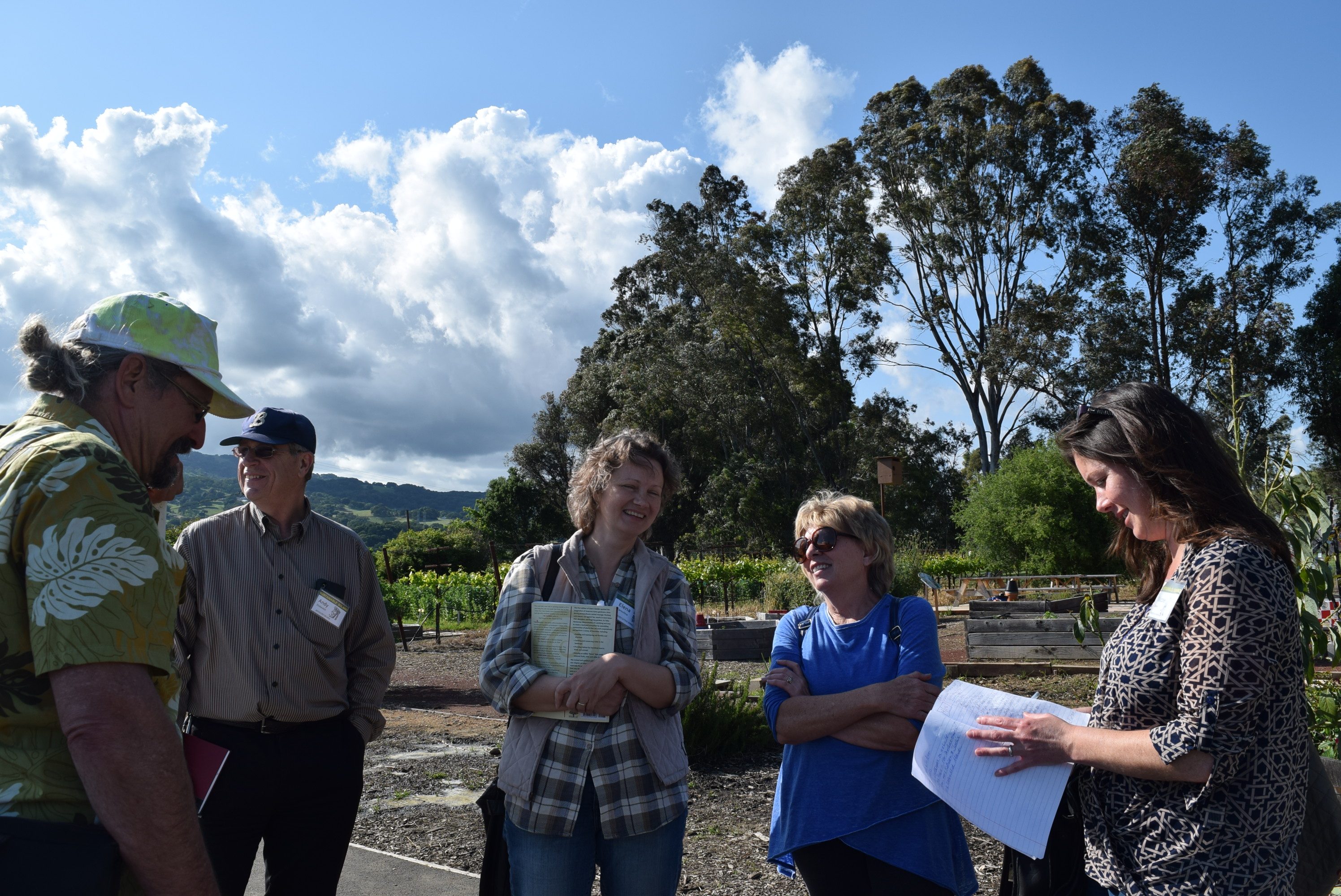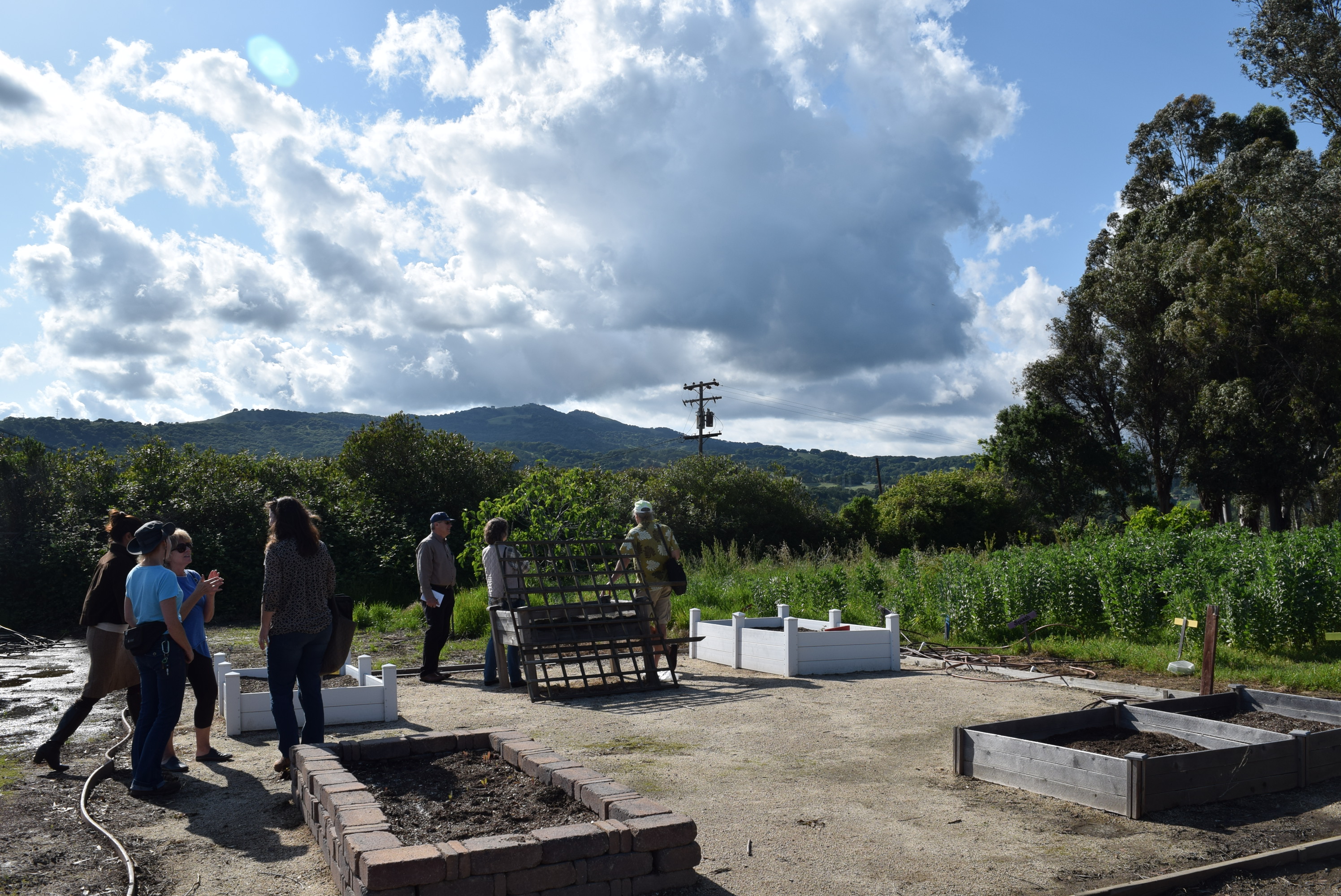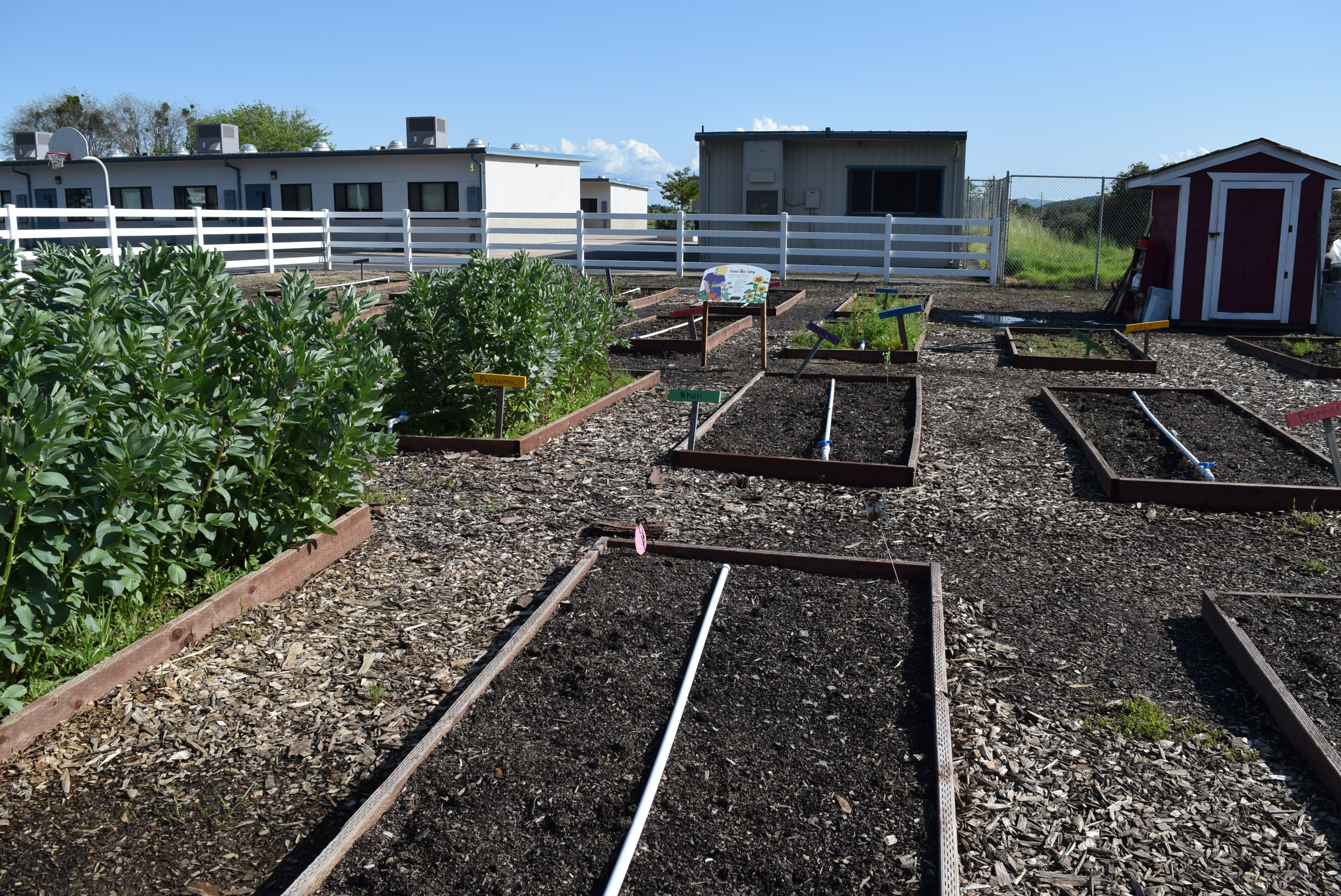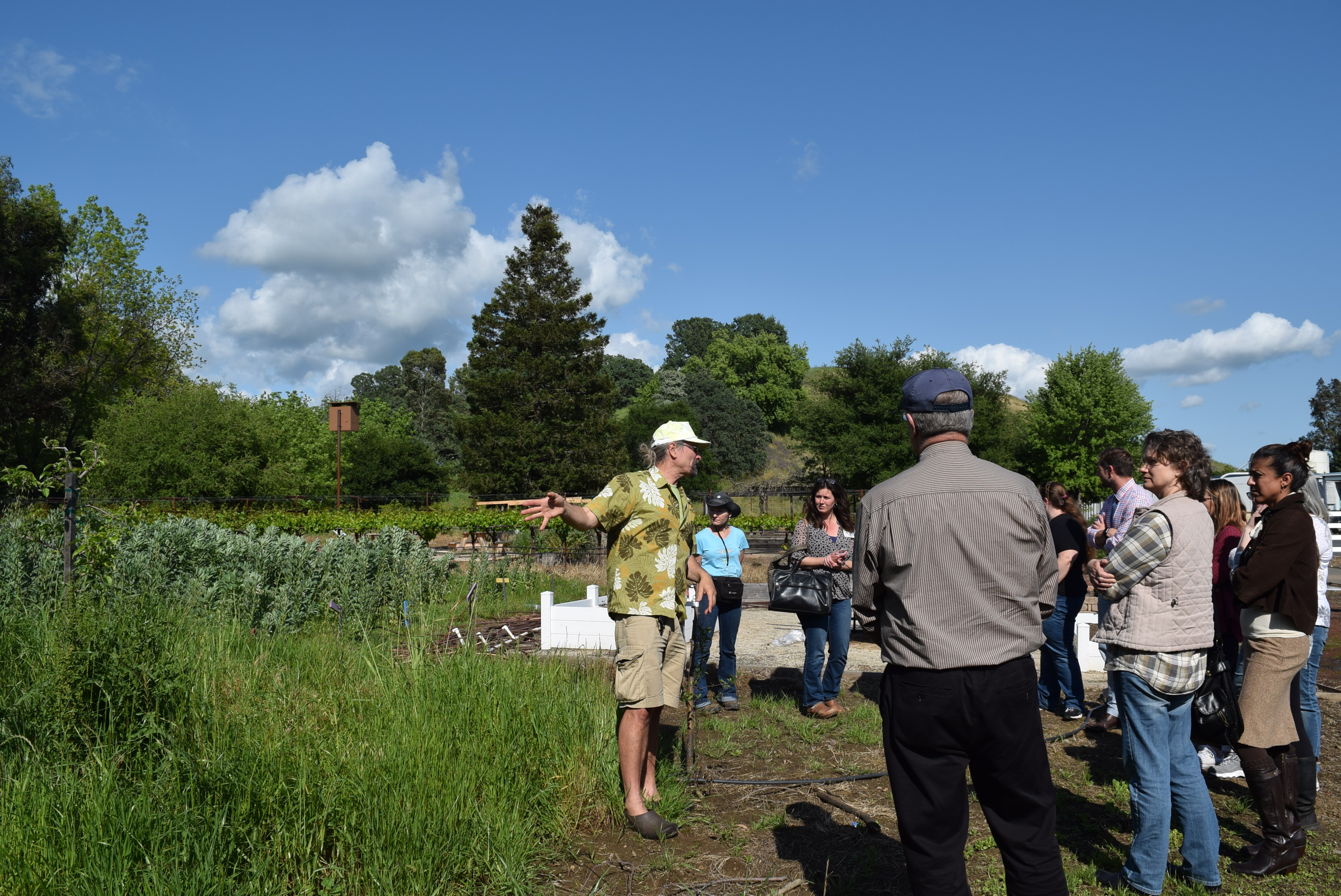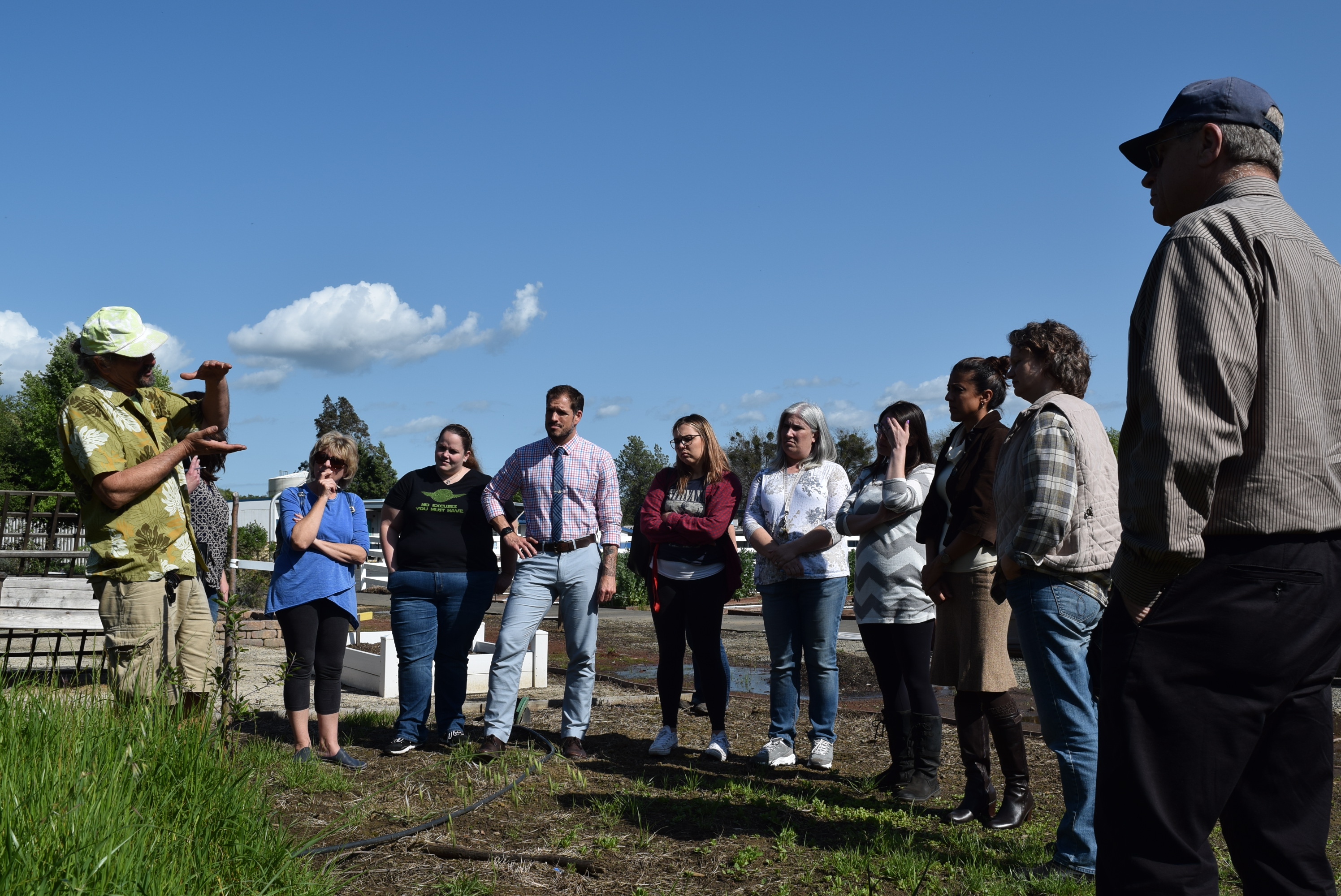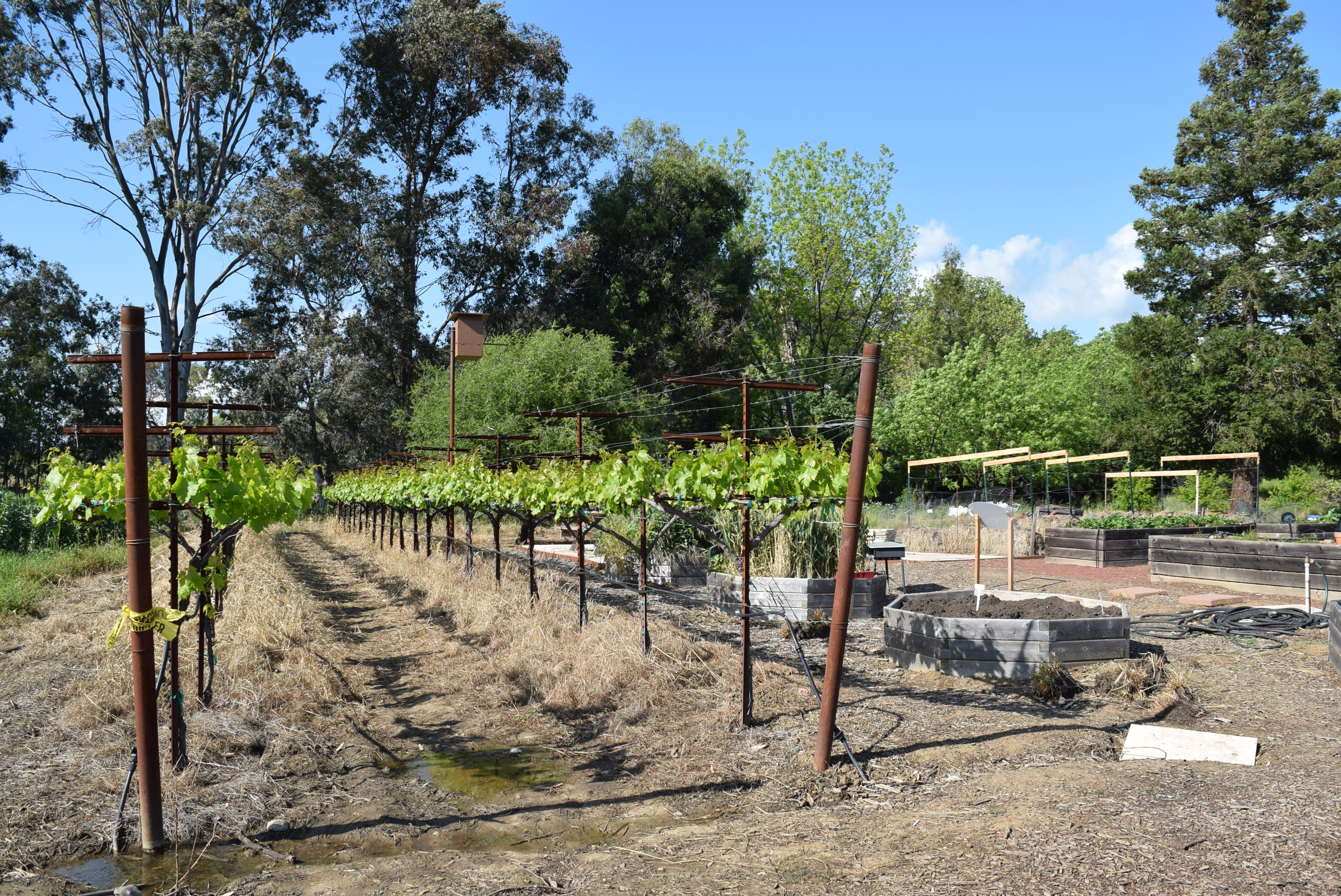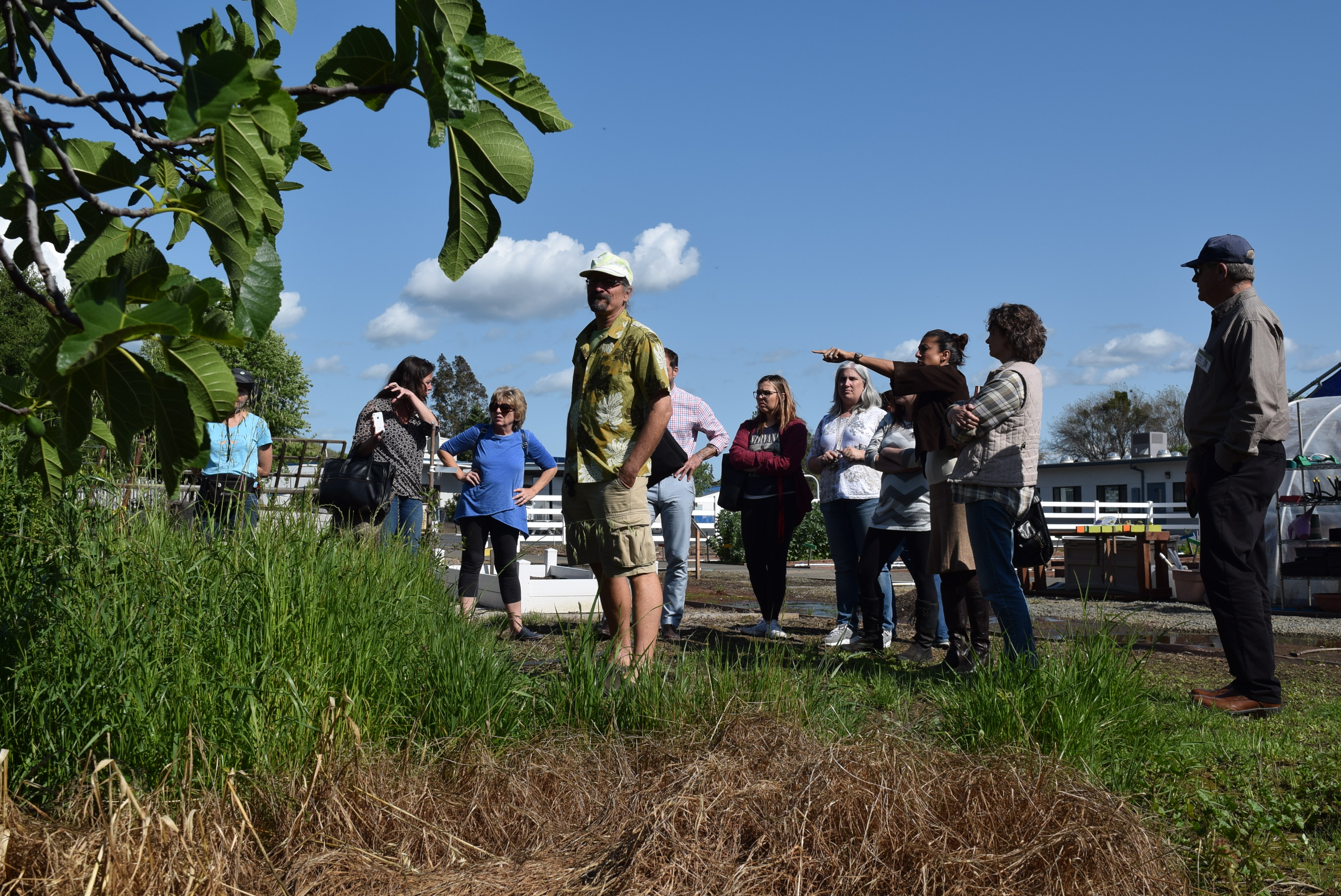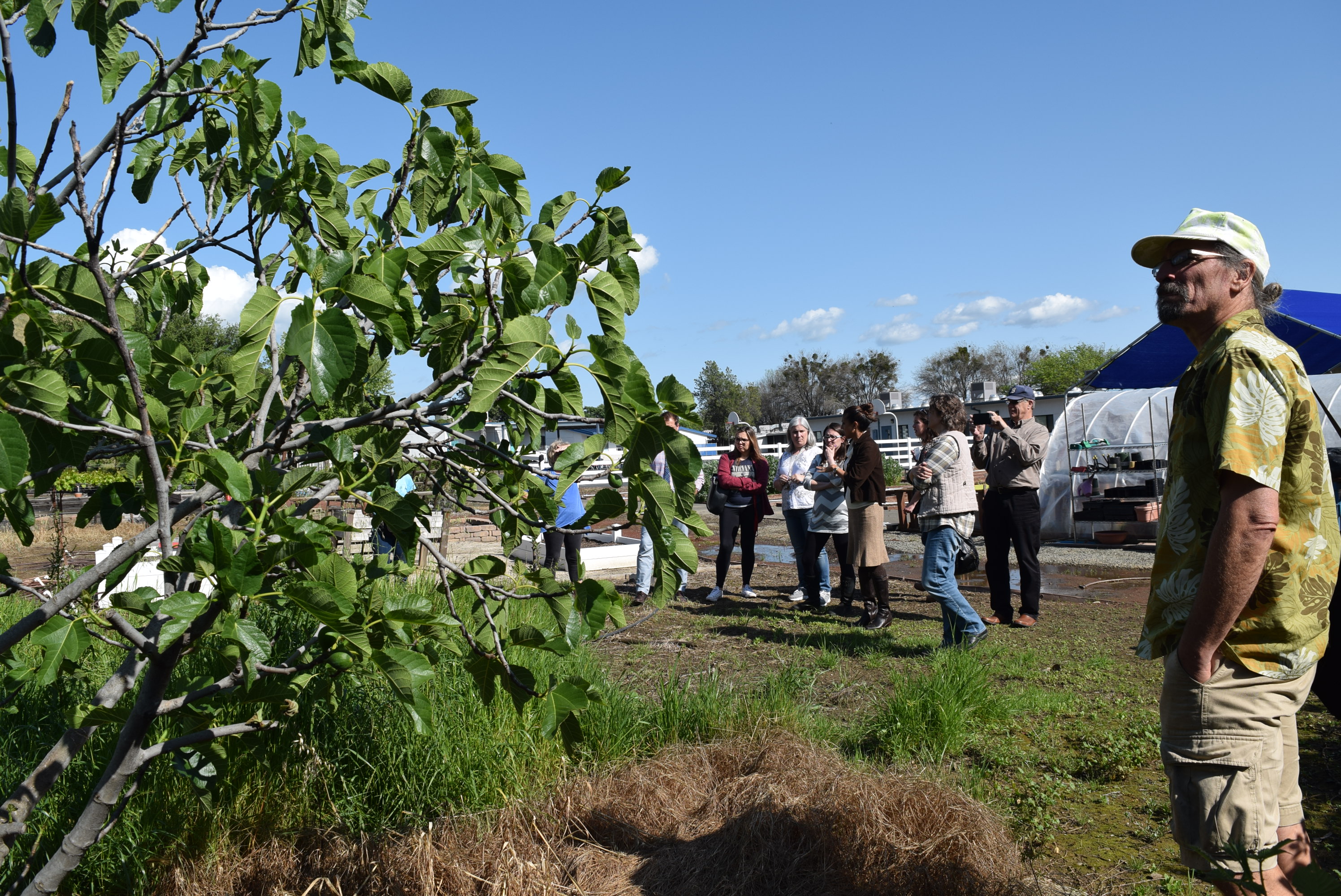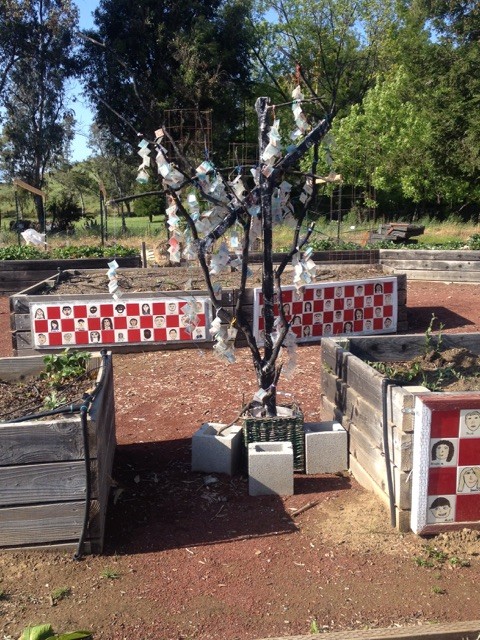
What can be taught in a garden? Suisun Valley Elementary School is already teaching and gardening, sharing a curriculum developed through the Edible Schoolyard Project, whose mission is building and sharing an edible education curriculum for kindergarten through high school.
The garden started small with one raised bed and it continues to expand. There is a native plant garden, multiple raised beds, fruit trees, roof water collection and fava beans (just to mention of few of their projects).
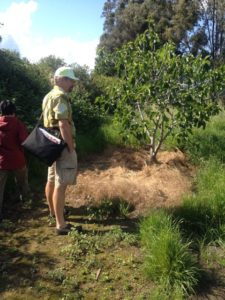
John Valanzuela surveying the future Demonstration Food Forest at Suisun Valley K-8 School.
John Valenzuela, permaculture expert and rare fruit enthusiast of Cornucopia Gardens came to speak to the Faculty at Suisun Valley Elementary School to expand the education curriculum to include permaculture concepts. With his unique flare he spoke about ecological concepts and the three limiting factors that guide the design: Water, Fertility and Sunlight.
The basic design concept of permaculture is to plan gardens with plant diversity that emulates a forest. This creates eco-landscapes consisting of 7 dimensions: canopy, low tree layer, shrub layer, herbaceous layer, ground cover, root, and vine layer. He credits the late horticulturist Robert Hart as the pioneer of forest gardening although with his great anthropology knowledge and experience in Hawaii and the Caribbean, he sometimes also cites of the garden of indigenous peoples as examples of dimensional gardening.

Yampah (perideridia), image from wikipedia
John also spoke about the importance of choosing plants that have more than one function (creating another layer of
diversity). For example, Yampah, a native plant that is part of the carrot family, from leaves to root this plant can be eaten. Not only is it edible, it also attracts many native pollinators and provides anise swallowtail and checkerspot butterfly larvae with a native food source. It thrives in dry soil and John described it as tasting like maple syrup. What an example of a plant that serves many functions.
Habitat is another function. John emphasized the importance of creating habitat for wildlife by adding owl boxes. (Suisun Valley already has one!) Then the faculty was asked to share their thoughts. Principal Jas Wright wanted the children to be part of the design, to do the research and choose the plants. This led to a great discussion and curriculum change on Sustainable Solano’s part! Rather than doing our typical food forest installation where a permaculture expert talks with the caretakers then designs and implements a demonstration garden with volunteers and educates with explanations and then hands-on installation workshops, we will be guiding the children to be part of the design as well! What an exciting way to empower students. Suisun Valley K-8 School is truly turning their motto of being “a premier learning academy that empowers each student to thrive in an ever-changing world” into action.
Stay tuned for more updates on the student-led, expert-guided design process, building up to our Suisun Valley Demonstration Food Forest Installations slated for this coming Fall!

